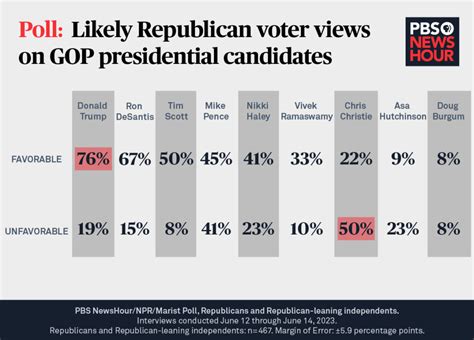Discover the truth behind common baseball myths, their origins, and how they shape fan perceptions in this engaging exploration of America’s pastime.Baseball, America’s cherished pastime, is steeped in rich history and tradition. Yet, alongside its celebrated legacy lies a tapestry of myths and misconceptions that continue to intrigue fans and players alike. In “Exploring Baseball Myths: Facts vs. Fiction,” we delve into the common myths that have long shaped the narrative of this beloved sport, separating fact from fiction. From the origins of these popular tales to their lasting impact on fan perception, we’ll traverse the realm of baseball folklore, illuminating lesser-known myths and presenting expert opinions that challenge these long-held beliefs. Whether you’re a seasoned fan or new to the game, this article promises to enhance your understanding of baseball’s fascinating world, ensuring you’re better informed for your next trip to the ballpark. Join us as we step up to the plate and redefine what you think you know about baseball!
Common Baseball Myths Debunked: Separating Fact From Fiction
When it comes to baseball myths, there is a wealth of misconceptions that have permeated fan culture over the years. Understanding the reality behind these myths can enhance the viewing experience for both casual fans and seasoned enthusiasts. Here are a few of the most common myths, along with the truths that debunk them:
- Myth 1: A player’s batting average reflects their overall ability. While a high batting average can indicate some level of skill, it does not account for on-base percentage, slugging percentage, or overall contributions to the team.
- Myth 2: The designated hitter (DH) rule is ruining the game. The DH rule allows teams to have a strong hitter in the lineup without requiring them to play defensively, which can increase overall game excitement and scoring.
- Myth 3: Home runs are the only important metric for a hitter. While home runs are thrilling, consistent base hits, walks, and stolen bases are equally vital for a player’s effectiveness and the team’s success.
- Myth 4: All baseball players use steroids to enhance performance. The reality is that the vast majority of players compete without performance-enhancing drugs, and rigorous testing in the league helps maintain fair play.
- Myth 5: If a player is batting .300, they get a hit three out of ten times. While this statement might seem intuitive, batting averages reflect total at-bats rather than how many hits a player gets in a traditional sense.
These examples illustrate how baseball myths can distort perceptions of the game. By separating fact from fiction, fans can gain a deeper understanding of the sport and appreciate the skills and strategies that contribute to success on the field.
The Origins Of Popular Baseball Myths And Their Impact
Baseball has long been woven into the cultural fabric of America, and with its rich history come a plethora of baseball myths. Many of these myths arise from misunderstandings or exaggerated tales that have been passed down through generations. Understanding the origins of these myths can shed light on their significance and impact on the game and its fans.
Historically, the formation of some popular baseball myths can be traced back to the game’s early days in the late 19th century. As baseball began to gain popularity, storytelling became a cherished part of the culture; players’ exploits were often exaggerated, leading to the creation of legendary figures like Babe Ruth and his supposed curse-breaking prowess. Myths often serve to enhance the narrative surrounding a player or event, painting a larger-than-life picture that captivates fans.
Another frequent source of baseball myths is the game’s inherent complexity, which can lead to misconceptions. For instance, the notion that a player can step on the bag to make an out, without considering the complexities of rules surrounding tagging and base running, oversimplifies the sport’s nuances. These misunderstandings can affect how fans perceive player actions and decisions during games.
The impact of these myths transcends mere trivia; they shape fan identity and community. For instance, the myth of the home field advantage leads fans to believe that their support can sway game outcomes, fostering a strong sense of loyalty and connection to the team. This phenomenon can be seen in ballparks across the nation, where ardent supporters create an electric atmosphere, firmly believing that they contribute to their team’s success.
| Myth | Origin | Impact |
|---|---|---|
| The Curse of the Bambino | Trade of Babe Ruth to the Yankees | Intensified rivalry between Red Sox and Yankees |
| The .300 Batting Average | Belief it signifies a great player | Influences player evaluations and Hall of Fame discussions |
| Baseball is a Game of Superstitions | Players and fans often rely on rituals | Fosters community practices among fans and teams |
As we continue to explore the world of baseball myths, it’s essential to recognize that these narratives, whether true or false, resonate deeply within the fan community and contribute to the overall experience of the sport. Understanding their origins enhances our appreciation for the game and emphasizes the importance of critical thinking in demystifying these long-standing tales.
How Baseball Myths Influence Fan Perception And Behavior
The world of baseball is rich with traditions and stories, many of which have evolved into baseball myths that shape the way fans engage with the game. These myths don’t just entertain; they can significantly affect perceptions and behaviors among fans, influencing everything from team loyalty to game-day rituals.
One of the primary ways baseball myths affect fan perception is through the emotional narratives often attached to them. For instance, the belief in the “Curse of the Bambino” significantly altered how Boston Red Sox fans viewed their team’s history and fortunes. This narrative created a sense of shared suffering and camaraderie, leading fans to identify more deeply with the team. Such myths can foster resilience and passionate loyalty, especially during challenging seasons.
Moreover, baseball myths can also impact how fans view players and their performances. Common beliefs, such as the idea that a player hitting below .200 in the early part of the season is doomed to a poor year, may lead fans to prematurely judge a player’s capabilities based on these myths rather than their actual statistics and abilities. This kind of perception can influence fan support and change the way players are received by the public.
Additionally, baseball myths can translate into unique rituals and behaviors among fans. Many fans feel compelled to wear a lucky jersey or follow a specific routine when watching games, believing these actions can influence the outcome in favor of their team. These behaviors do more than just reflect belief; they create a culture of superstitions that reinforce the communal identity of the fanbase.
In essence, while baseball myths may seem like mere stories, their impact on fan perception and behavior is profound. By shaping emotions, influencing judgments, and creating rituals, these myths contribute to a rich tapestry that enhances the overall experience of being a baseball fan. Understanding the origins and implications of these myths can provide fans with a deeper appreciation for the game they love.
Exploring Lesser-Known Baseball Myths And Their Truths
While many baseball myths make the rounds among fans, several lesser-known baseball myths are often overlooked. These myths can shape perceptions about players, strategies, and the game itself. Here, we delve into a few of these myths and separate fact from fiction.
Myth 1: The Curse of the Bambino – This myth surrounds the Boston Red Sox’s performance after they sold Babe Ruth to the New York Yankees in 1919. It’s popularly believed that this sale cursed the team, which didn’t win a World Series for 86 years. However, the reality is that many factors, including team management and player performance, contribute to a team’s success or failure over the years.
Myth 2: The ‘Dead Ball’ Era – Some enthusiasts believe that the baseballs used during the Dead Ball Era (1900-1919) were intentionally altered to reduce scoring. In truth, these balls were naturally less lively due to manufacturing practices of the time, and the era is characterized more by the playing style of the players than by the condition of the balls.
Myth 3: Players Who Don’t Wear Bats on the Water – There’s a common belief that if a player steps on home plate while carrying a bat over the water, they will experience significant bad luck. This is simply a superstition without any substantiated evidence to support its validity. Athletes often develop superstitions, but they vary widely and don’t have any real impact on performance.
Myth 4: Hitting a Home Run is Pure Luck – While wind conditions, the pitcher’s skills, and other external factors can contribute to an unexpected home run, hitting one typically requires a great deal of skill and practice. Many of the greatest sluggers have spent years honing their techniques to ensure consistent performance, dispelling the notion that home run hits are merely lucky strikes.
Myth 5: The ‘Home Team’ Advantage is Decisive – It is generally accepted that teams playing at their home stadium have an advantage, likely due to familiar surroundings and fan support. However, statistical data has shown that while there is a slight edge, it is not as definitive as many fans believe. Factors like the caliber of the team and the specific match-up can often outweigh the home field benefit.
Unraveling these lesser-known baseball myths can enhance our understanding and appreciation of the game. Fans should continue to seek out the truth behind these myths to foster a deeper connection with baseball, its history, and its rich tapestry of narratives.
Challenging The Myths: Expert Opinions On Baseball Facts
When it comes to baseball myths, not all that glitters is gold. Many perceptions held by fans are built on long-standing beliefs that may be more fiction than fact. To debunk these baseball myths, we turn to the experts—coaches, players, and analysts who provide insights grounded in statistics and real-world experience.
For instance, a common myth suggests that a player’s batting average defines their overall skill. However, baseball analysts argue that focusing solely on batting average can be misleading. On-base percentage and slugging percentage are often better indicators of a player’s value to the team. Renowned baseball statistician Bill James famously noted, If you can get on base, you can find your way home.
Another prevalent belief is that a player’s height and weight strongly correlate with their performance. While physical attributes can influence a player’s capabilities, many experts agree that intangibles like work ethic and mental fortitude are equally, if not more, critical to success on the field. As former MLB player and coach Tony La Russa pointed out, The best players are those who adapt and learn, regardless of their physical characteristics.
In the realm of pitching, myths often arise surrounding the use of breaking balls. Some suggest that these pitches can rupture a young pitcher’s arm. However, many pitching coaches clarify that proper mechanics and training are far more significant factors contributing to injury than the pitch type itself. Educated coaching can help young pitchers develop arm strength and technique, challenging the idea that certain pitches are inherently harmful.
Additionally, the myth of the rookie wall states that first-year players inevitably struggle in the second half of the season. While some do experience a dip in performance, experts believe that this can be attributed more to fatigue and adaptation to the professional level rather than a universal truth about all rookies. Understanding how to manage one’s energy and routine can mitigate such challenges.
Overall, expert opinions serve as a crucial element in dismantling the web of baseball myths. By combining statistical analysis and firsthand experience, these professionals help reshape fan understanding and promote a deeper appreciation for the game. As baseball continues to evolve, it is essential to challenge existing beliefs and foster informed conversations among fans and athletes alike.
Top Baseball Myths Worth Knowing About For Fans
Baseball has a rich history filled with stories, traditions, and legends that often blur the line between fact and fiction. Understanding the truth behind these baseball myths can enhance your appreciation for the game. Here are some of the top baseball myths that every fan should be aware of:
- Myth 1: A batter cannot be out on a third strike if the catcher drops the ball. Truth: This is incorrect. A batter can be out on a dropped third strike if first base is occupied, or if there are two outs.
- Myth 2: Batting averages are the best way to measure a player’s effectiveness. Truth: While batting averages provide insight, players’ overall contributions can be better assessed using on-base plus slugging (OPS) or Wins Above Replacement (WAR).
- Myth 3: You can’t steal first base. Truth: Technically, a player can steal first base if they hit a ball that is not caught and run to first before the catcher gets the throw there. However, it’s exceedingly rare in practice.
- Myth 4: A player can’t pitch and play another position in the same game. Truth: Players can switch between pitching and playing another position during a game, although this is uncommon.
- Myth 5: A hitting streak is more impressive than a pitching streak. Truth: Both hitting and pitching streaks have their own significance, and their value can vary depending on the circumstances surrounding them.
As a fan, being aware of these baseball myths helps foster a deeper understanding of the game. Clarifying these myths can lead to more informed discussions and enhance the overall enjoyment of watching baseball.
Frequently Asked Questions
What is the origin of the myth that bats are made of ash wood?
The myth likely stems from the fact that many of the early baseball bats were indeed made from ash, but today players use a variety of woods, including maple and birch, to enhance performance.
Is it true that spitting on your hands improves grip on the bat?
While some players believe that spitting can enhance grip, it actually introduces moisture that could lead to slippery conditions. Proper grip techniques and bat texture are more effective for better control.
Do baseball players have a specific ‘lucky’ number that brings them success?
The belief in lucky numbers is largely anecdotal. While some players may have personal favorites, success in baseball is primarily attributed to skill, practice, and strategy rather than superstition.
Is it a myth that all MLB players must wear a specific cap size at all times?
This is a myth. While players often wear caps that fit properly for comfort and professionalism, there are no strict regulations on cap size, allowing players to choose what works best for them.
Are all baseball statistics reliable indicators of a player’s performance?
Not necessarily. While traditional statistics provide insight, advanced metrics and situational analyses can offer a more comprehensive view of a player’s abilities and contributions.
Is it false that hitting home runs is the only way to succeed in baseball?
This is a misconception. While home runs are valuable, there are many ways to contribute to a team’s success, including base running, defense, and getting on base through walks or singles.
Can you really catch a baseball with your bare hands without injury?
Yes, it is possible to catch a baseball with bare hands, but it requires proper technique and practice. However, it is generally safer to wear a glove to avoid injury and improve catching ability.









